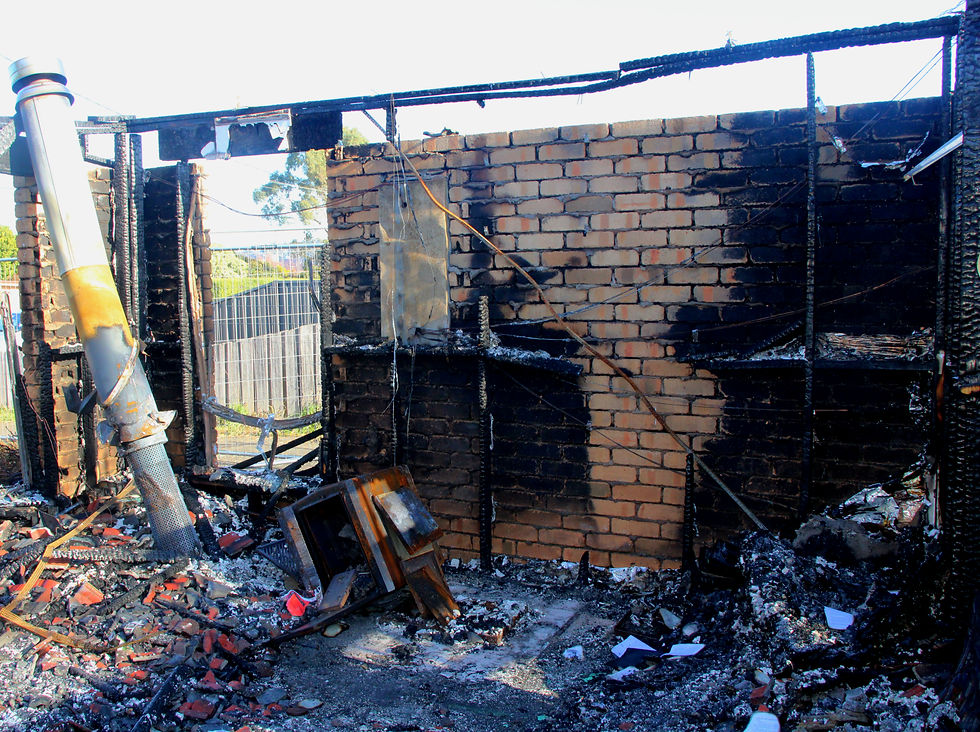Case Study: Excavator Fire: Lessons in how routine maintenance can prevent fire incidents
- Vithyaa Thavapalan
- Feb 18
- 2 min read
Updated: May 30
A significant fire incident occurred involving a large excavator operating on a remote mine site. While in use during night operations, the operator detected a burning rubber smell. A nearby colleague confirmed the presence of flames, prompting the operator to evacuate immediately. Despite prompt action, the fire spread quickly and resulted in the total loss of the operator's cabin and severe damage to the engine bay.
A subsequent investigation identified the source of the fire as a leak from the hydraulic system. Specifically, the fire originated beneath the turbocharger, where a flexible hydraulic hose had ruptured. The hose in question was part of a group of hoses clamped together near the turbocharger. It failed due to long-term exposure to heat and vibration, combined with corrosion of the hose clamp—likely caused by the site’s high-salinity environment. This corrosion allowed the clamp to loosen, reducing support for the hose and allowing it to sag and chafe against the turbocharger housing.
Over time, this mechanical wear resulted in the hose wall thinning and eventually rupturing. Pressurised hydraulic fluid then sprayed directly onto the hot surface of the turbocharger, which operates at temperatures exceeding 1000°C, well beyond the autoignition point of hydraulic oil (typically 400–450°C). The fluid ignited instantly, and due to the location of the failure, flames quickly spread to the engine bay and cabin.
Critically, the machine was fitted with a fire suppression system, but it had not been serviced or tested and was found to be inoperative at the time of the incident. This meant the fire was left to escalate unchecked, resulting in complete equipment failure and extended operational downtime.
This incident reinforces several key lessons. Hydraulic hoses located near heat sources must be protected, well-supported, and routinely inspected, particularly in corrosive environments. Hose clamps should be corrosion-resistant, and any signs of wear or weakening should trigger immediate maintenance action. In addition, fire suppression systems must be regularly maintained and tested. A non-functional suppression system offers no protection when it's needed most.
When a fire occurs on a mine site, it can lead to costly disruptions due to the loss of a critical machine. This is why strict adherence to preventative measures and a structured maintenance schedule is essential. Fires like this are not just equipment failures, they are operational and financial setbacks that can be avoided with the right practices.
I’m grateful to have had the opportunity to investigate this matter. Cases like these not only present important technical challenges but also offer meaningful insights into how we can improve safety, reliability, and business continuity across the mining and heavy equipment sectors.



Comments